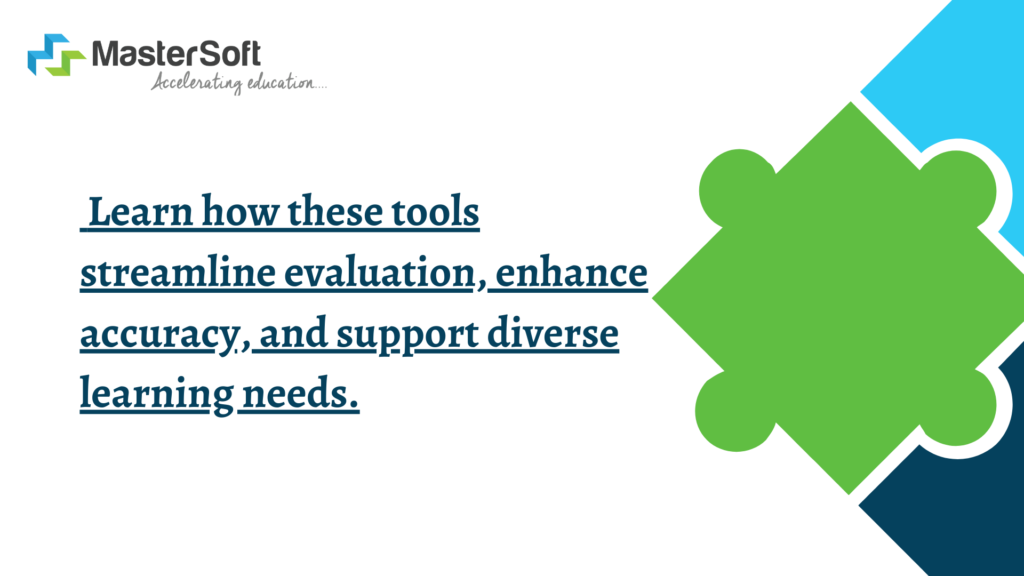In today’s fast-paced digital world, traditional methods of assessment are increasingly being replaced by more efficient and flexible solutions. One of the most prominent advancements in this space is the online assessment tool. Whether you’re an educator, HR professional, or business owner, understanding how these tools work and how to use them effectively can transform the way you evaluate skills, knowledge, and performance. This beginner’s guide will take you through the fundamentals, benefits, and practical applications of online assessment tools, ensuring you’re equipped to leverage this technology in your field.
1. What is an Online Assessment Tool?
Understanding the Basics
An online assessment tool is a digital platform designed to create, deliver, and manage various types of assessments over the internet. These tools enable users to design tests, quizzes, surveys, and other forms of evaluation without the need for physical materials or in-person supervision.
Online assessment tools are versatile, offering a range of question formats, including multiple-choice, short answer, true/false, and more complex options like simulations or coding tests. This flexibility makes them suitable for various fields, from education and recruitment to employee training and certification.
2. Why Use Online Assessment Tools?
Exploring the Benefits
The transition to online assessments is driven by several compelling benefits:
- Efficiency and Convenience: Online assessments streamline the entire process, from creation to grading. Automated scoring systems reduce the time and effort required to evaluate responses, providing immediate feedback to participants.
- Accessibility and Flexibility: With online assessment tools, participants can complete tests from anywhere, at any time. This is particularly beneficial in remote learning environments or for businesses with geographically dispersed teams.
- Customization: These tools allow for a high degree of customization. You can tailor assessments to specific learning objectives, skill levels, or job requirements. This ensures that the evaluation is relevant and aligned with the goals of your organization or educational program.
- Data-Driven Insights: Online assessment tools often come with analytics features that track performance over time, identify areas for improvement, and offer insights into participant behavior. This data is invaluable for refining teaching strategies, training programs, or recruitment processes.
- Scalability: Whether you’re testing a small class of students or thousands of employees, online assessment tools can scale to meet your needs without compromising on quality or efficiency.
3. How to Choose the Right Online Assessment Tool
Key Factors to Consider
Choosing the right online assessment tool can seem daunting, especially with so many options available. However, by focusing on a few key factors, you can make an informed decision:
- Ease of Use: The tool should be user-friendly for both the administrator and the participants. Look for platforms with intuitive interfaces and clear instructions.
- Question Types and Customization: Ensure the tool offers a variety of question types and allows for customization to suit your specific needs. This could include multimedia support, adaptive questioning, or the ability to create complex simulations.
- Security Features: Data security is paramount, especially when handling sensitive information. Choose a tool that complies with relevant data protection regulations and offers features like secure logins, encrypted data, and controlled access.
- Integration Capabilities: Consider whether the tool can integrate with other software you use, such as learning management systems (LMS), HR systems, or communication platforms. This can streamline workflows and reduce the need for manual data entry.
- Pricing and Support: Evaluate the cost against the features offered. Some tools offer free versions with limited functionality, which can be suitable for smaller organizations or individual educators. Also, consider the availability of customer support, especially if you’re new to using online assessment tools.
4. Setting Up Your First Online Assessment
Step-by-Step Guide
Once you’ve chosen an online assessment tool, setting up your first assessment is the next step. Here’s a general guide to get you started:
- Define Your Objectives: Clearly outline what you want to assess. Are you measuring knowledge, skills, or competencies? Understanding your objectives will guide the structure and content of your assessment.
- Create a Question Bank: Start by building a repository of questions related to your objectives. Online assessment tools often allow you to save and categorize questions, making it easy to reuse them in future assessments.
- Design the Assessment: Using the tool, organize your questions into a coherent structure. Decide on the number of questions, the time limit, and the scoring system. Consider using a mix of question types to keep participants engaged.
- Customize the Experience: Add instructions, branding elements, or multimedia content to enhance the assessment experience. This can include company logos, introductory videos, or explanatory images.
- Test Before Launch: Before releasing the assessment to a wider audience, conduct a test run with a small group. This helps identify any technical issues or content errors that need to be addressed.
- Deploy and Monitor: Once you’re satisfied with the setup, launch the assessment. Use the tool’s monitoring features to track participation and progress in real-time.
5. Best Practices for Effective Online Assessments
Maximizing the Impact
To ensure your online assessments are effective, consider the following best practices:
- Clear Communication: Provide participants with clear instructions and expectations. This includes details on the format, time limits, and any technical requirements.
- Regular Updates: Keep your question bank and assessment content updated to reflect current knowledge and skills. This is particularly important in rapidly evolving fields like technology or healthcare.
- Use Analytics: Take advantage of the analytics features offered by online assessment tools. Regularly review the data to identify trends, areas for improvement, and opportunities for personalized feedback.
- Balance Difficulty Levels: Ensure your assessments are neither too easy nor too challenging. A balanced difficulty level helps accurately gauge participant abilities and maintain engagement.
- Encourage Feedback: After the assessment, ask participants for feedback on their experience. This can provide valuable insights into how you can improve future assessments.
6. Overcoming Common Challenges
Tips for Success
While online assessment tools offer many advantages, they also come with their own set of challenges. Here’s how to address some common issues:
- Technical Difficulties: Ensure that both you and your participants have access to a reliable internet connection and compatible devices. Offer technical support or a helpdesk during the assessment period to assist with any issues.
- Cheating Prevention: To minimize the risk of cheating, use tools that offer proctoring features such as webcam monitoring, browser lockdown, or randomizing question order. Additionally, designing assessments that focus on application and critical thinking rather than rote memorization can help.
- Engagement: Keep participants engaged by incorporating interactive elements like multimedia content or gamification. Also, consider breaking up longer assessments into smaller, more manageable segments.
- Bias and Fairness: Ensure that your assessments are free from bias and are fair to all participants, regardless of their background. This might involve using inclusive language, avoiding culturally specific references, or testing the assessment with diverse groups.
Conclusion
Online assessment tools are transforming the way we evaluate knowledge, skills, and performance across various fields. By understanding their benefits, choosing the right tool, and following best practices, you can create effective and engaging assessments that provide valuable insights. Whether you’re an educator, HR professional, or business owner, embracing this technology can lead to more accurate evaluations, improved learning outcomes, and better decision-making.
Embrace the future of assessment today by integrating online tools into your evaluation processes. With the right approach, you’ll find that these tools not only simplify your work but also enhance the quality and reliability of your assessments.
Read More Blog Here




strongest oral steroids
References:
which Is true regarding anabolic steroids And supplements?
– ansgildied.com,
В этой статье представлен занимательный и актуальный контент, который заставит вас задуматься. Мы обсуждаем насущные вопросы и проблемы, а также освещаем истории, которые вдохновляют на действия и изменения. Узнайте, что стоит за событиями нашего времени!
Детальнее – https://quick-vyvod-iz-zapoya-1.ru/